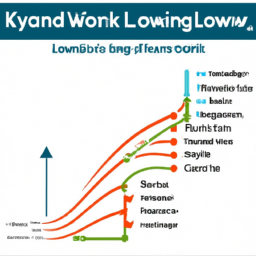Unlocking the Full Potential of Long Tail Keywords and Ranking Easily with Low SEO Difficulty
Table of Contents []
- How To Find Long Tail Keyword To Rank With Low Seo Difficulty
- Identify The Right Tools
- Search Autocomplete Suggestions
- Compare Search Volume & Competition
- Consider Optimal Keyword Length
- Test Relevant variations
- Check Your SEO Competitors
- Analyze Keywords For User Intent
- Evaluate keyword Difficulty Scores To Prioritize
- Check Search Intent Of Your Keywords
- In Summary
How To Find Long Tail Keyword To Rank With Low Seo Difficulty
How To Find Long Tail Keywords To Rank With Low SEO Difficulty
When it comes to SEO, ranking for keywords with low SEO difficulty can quickly skyrocket your website to the top page of most search engines. So, how do we identify the best long tail keywords that can be targeted with low difficulty? This article will take you through 8-12 primary steps to understand the concept of keyword difficulty and provide methods to effectively find the most suitable long tail keywords.
Identify The Right Tools
Utilizing the correct SEO keyword research tools is essential for finding long tail terms that can be targeted with low difficulty. Choose a keyword research tool that offers a difficulty score to help you prioritize the most achievable terms. Most commonly used SEO tools measure keyword difficulty on a scale of 0 to 100, with 0 being the least difficult to rank for.
Search Autocomplete Suggestions
Take the guesswork out of your keyword research by making use of search engine auto-complete suggestions. Start by typing a seed keyword and let the search engine present you with the best long tail keywords. This is a great way to uncover keywords and phrases that aren't typically suggested by keyword research tools.
Compare Search Volume & Competition
Once you have collected a list of potential keywords, it's time to compare search volume and competition to determine which terms are most viable for your website. Low competition, high volume keywords offer the best chance of high returns. To make this process easier, consider using tools that offer advanced metrics such as SERP rank, Alexa rank, organic traffic, and cost-per-click analysis.
Consider Optimal Keyword Length
Long-tail keywords provide a better opportunity for successful SEO, due to their increased specificity and lower competition. Aim for keyword phrases with 3 or more words, as they are more likely to receive higher click through rates than shorter terms.
Test Relevant variations
To get the best results, it's important to search for additional relevant variations of your initial keywords. Don't limit yourself by sticking to only one keyword; think of alternate words that you can use to describe the same product or service. To find the best variations of your terms, use a thesaurus or related searches feature where available.
Check Your SEO Competitors
Make sure to run an analysis of your top competitors and the keywords they're targeting. As you review their keyword usage, think about what you could do differently and better to stand out from them. Taking the time to focus on your competitors' keyword strategies can open up a whole new range of keyword opportunities for you.
Analyze Keywords For User Intent
Once you've collected a list of potential keywords, analyze them to better understand the user intent. This can help you understand consumer behaviour and determine which terms are most likely to be used when referring to your business or products. This will help you determine which keywords are most likely to yield better results and ultimately increase conversions.
Evaluate keyword Difficulty Scores To Prioritize
Don't forget to review the difficulty scores of each keyword before you choose which ones to target. Utilize data from keyword difficulty score tools to identify the most achievable terms and prioritize those for your SEO strategy. A lower keyword difficulty score indicates that the term is easier to rank for than high-difficulty keywords, so that is the term you should be targeting first.
Check Search Intent Of Your Keywords
Finally, check the search intent of your chosen keywords. This is the most important step to ensure your SEO efforts are not wasted. Make sure to analyze the short term as well as long-term intent of the search query to ensure you're able to provide the most relevant and useful information to your target audience.
In Summary
The implementation of effective keyword research techniques can be daunting, but great results come with practice and hard work. To maximize success in SEO, use the steps outlined in this article to identify the most suitable long tail keywords to rank with low SEO difficulty and achieve desired search engine rankings.
Prioritizing keywords with low search difficulty and focusing on relevant variation of your seed keywords will help ensure you are targeting the right keywords for your SEO strategy. Carefully analyzing the user intent of each term will provide further clarity on which keywords are most likely to result in increased conversions. And lastly, don't forget to check the search intent of the keywords before you begin to optimize your content.
What To Expect Next
Now that you have identified long tail keywords that can be targeted with low SEO difficulty, the next step is to strategically build out content for your website and optimize it with the correct keywords. Ensure the content is clear and relevant, and include visuals, graphs, or tables wherever necessary to increase clarity and engagement. Finally, provide the necessary internal links to maximize your SEO outcomes and enjoy the rewards!
